California Seat Belt Defect Attorney | Defective Seatbelt Lawyers
In spite of all the major safety innovations in cars today, a safety belt, or more commonly a seat belt is still the most crucial safety device in an automobile. Introduced in 1964, seatbelts have saved millions of lives, and prevented countless injuries. According to the CDC, 53% of all drivers killed in a automobile accident were not wearing seat belts Since its inception, seat belt use has risen to nearly 75%, through reforms such as “Click It or Ticket,” and other safety campaigns. However, even with all the advancements, a defective seatbelt can cause the seatbelt to break, tear or fail to perform during an automobile crash. Any car accident technically will have two different impacts. The first impact is the accident itself, and the second is between the passengers and the interior of the vehicle, or the ground after being ejected from the vehicle. The seat belt is intended to prevent this second accident, or to curtail its effects. All vehicles are required to include a 3-point safety harness, located above the shoulder and on either side of the hips. This seatbelt design spreads the energy of the belt in any forward throttle situation.
Our Recent Verdicts and Settlements
$900,000
$600,000
$1.5 Million
$5.5 Million
$460,000
$1 Million
$750,000
$3 Million
Types of Seat belt Defects
Although some car manufacturers experience a higher rate of defective seatbelt, all types of cars, including Toyota (the Prius is especially notorious), Honda, Ford and GM can have a product defect. Below is a list of some of the most common types of seat belt defects: Inertial Unlatching or False Latching: This product defect occurs when the belt unlatches from the buckle. Most of the time, this is caused from intense force against the belt. False latching is a type of defect where the latch has presumably closed, or a “clicking” sound would suggest that it locked, yet it failed to properly close. In cases of inertial unlatching or false latching, a police report often will indicate that the passenger was unrestrained, or failed to use the seatbelt. Defective Lap or Shoulder Belt Retractor: During impact, the seatbelt retractor should lock into position. During retractor failure, the seat belt webbing rolls out, which causes “slack.” Even the smallest amount of slack can result in fatal injuries. “Skip-lock” or “skipping” can also occur when the retractor actually does lock, but the retractor lock bar bounces away. Some cars manufactured during the 1970’s through 1980’s had a “windowshade” device which provided a natural slack, and are inherently dangerous. Retractor failure can be a form of design or manufacturing defect. Lap Belt Alone or No Shoulder Strap: Some vehicles do not have shoulder straps attached to the seat belt, especially in rear and middle seats in the front row. Automotive System Failure: When the environment surrounding the seatbelt fails, the seatbelt is often rendered useless. Examples include seat malfunction or roof collapse.
Find out more about how we can help you. Call (855) 339-8879 to speak with a representative now.
Poor Seat Belt Structure: Although the best place for the seat belt to be placed is on the seat itself, some seatbelts are mounted on the floor, door or behind the seat. These poorly placed seatbelts are defective because poor angling. If attached to a door, a passenger can be ejected from a vehicle when the door opens during a crash. These types of accidents are most prevalent in rollovers. Torn or Ripped Belt Webbing: Seatbelt should never tear on their own. In fact, the webbing of a safety belt should withstand even the most severe forms of accidents. These types of defects may result from manufacturing defects, or sharp objects ripping through the fabric at the point of accident.
Signs of Seatbelt Defect
While each case is different, below are just some of the variables our attorneys will use to prove that your seatbelt was defective. Serious injuries to passengers properly wearing a seatbelt. This is especially true when the accident was minor.
- Loose fitting seatbelt
- Passenger is found without a seatbelt after the accident, even though they were belted prior to the accident
- Passenger make contact with objects directly in front of them, such as the windshield, or seat. This may also indicate that the belt provided too much slack
- Torn or ripped seatbelt webbing
- Seat belt is removed from its anchors
Call (855) 339-8879 to schedule a free legal consultation.
All about seat back and seat belts safety
– Seat Back Failure
– Should I Change My Child’s Car Safety Seat After An Accident
– Defective Baby Bumbo Seat Injury Attorney
– Defective Child Safety Seats and Restraint Injury Attorney
– Recovery for Injuries I Not Wearing Seat Belt as a Passenger
– What is the value of my seat belt defect lawsuit?
– Not Wearing Seat Belt in Car Accident
– How to file a case for injuries after my seat belt failed to work
– Bumbo Baby Seat Product Recall
– Defective Seat Belt Attorney
– Toyota FJ Cruiser Recall – Seat Belt Failure Defect
– Why are seat belt cases so dangerous
– Seat belt failure attorney
– How to Sue for a Replacement Car Seat
– Questions and answers about ZUM ridesharing service
– Seat Back Failures: Auto Manufacturers Duty of Care
– Seat Back Failures in Vehicles – Understanding the Dangers of Failing Seat Backs









